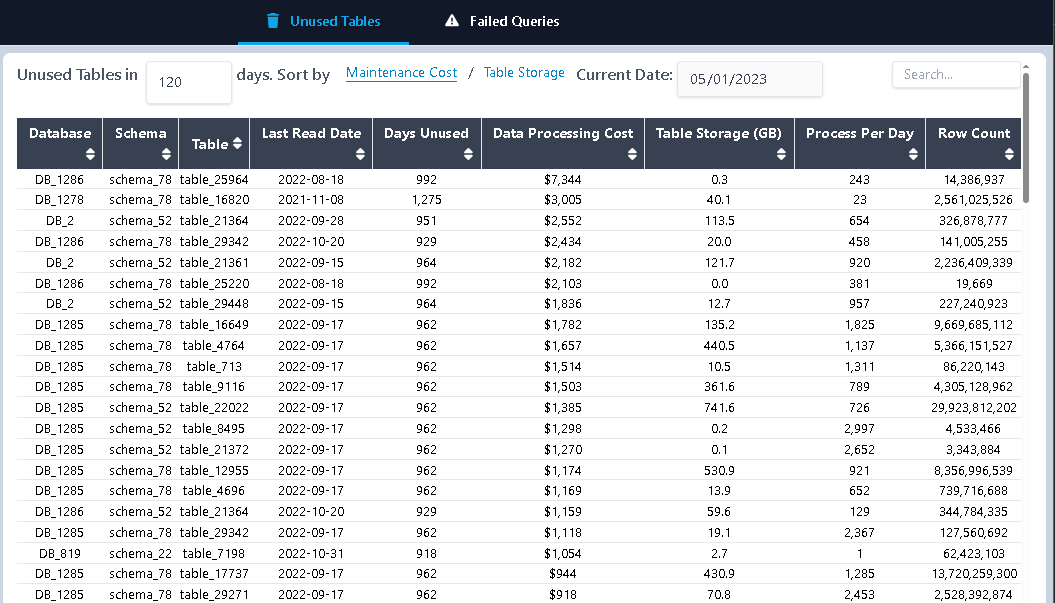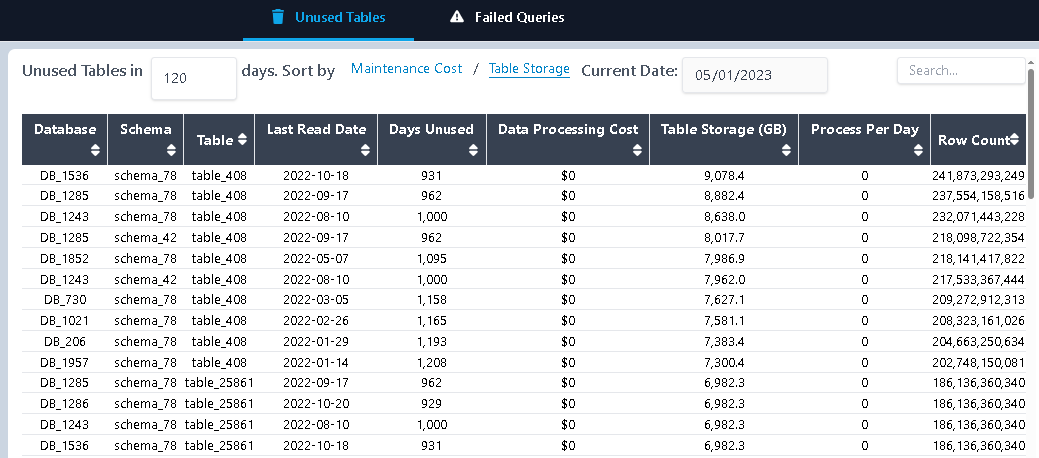Cost of Unused Tables
Purpose
In today’s landscape of data democratization, individuals across an organization can easily create their own tables and data pipelines. However, these users may not always follow the same IT discipline or governance practices. As a result, it's common for unused tables and pipelines to remain active—continuing to consume Snowflake credits unnecessarily. Identifying and eliminating these unused processes is a low-effort, high-impact step in your cost optimization journey.
Identify Unused Data Processing Costs
Go to Admin → Unused Tables. This page displays tables that have not been read in the past 120 days but still have active pipelines running. You can adjust the default 120-day threshold as needed.
In the example shown, table_25964 has not been accessed for a significant period, yet its pipeline remains active—updating the table 200 times per day. This has resulted in over $7,000 in unnecessary compute costs.
The table provides key information such as:
- Table name
- Last read date
- Data processing cost
- Average updates per day

Identify Unused Storage Costs
On the same page, click on the Table Storage tab. This refreshes the view to show unused tables ranked by storage usage.
For instance, table_408 has not been accessed in over six months. Although its pipeline has been turned off, the table still occupies 9 TB of storage—incurring ongoing storage costs without delivering value.

